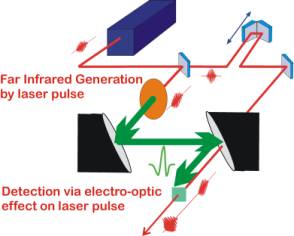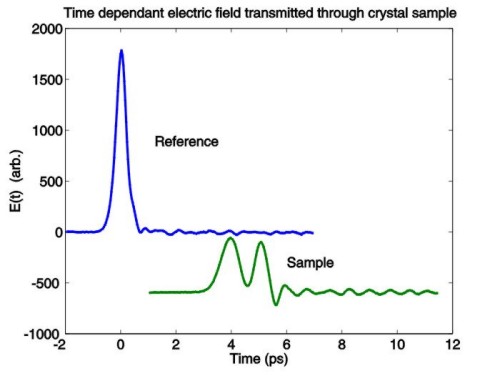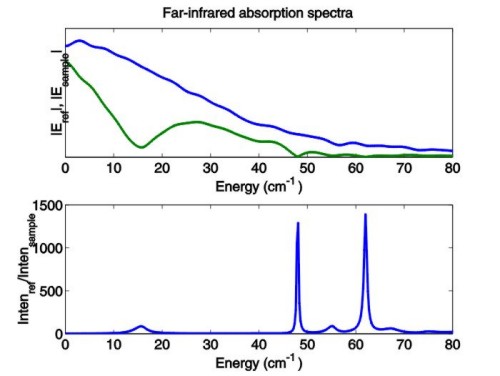 |
|
Terahertz Generation
Over the last decade, femtosecond lasers have found application in producing and detecting sub-picosecond far-infrared pulses. These pulses of electromagnetic radiation, in an otherwise difficult to reach part of the spectrum, have a number of characteristics that make them extremely useful for investigating material, chemical and plasma properties.
- an extremely wide bandwidth, ranging from ~30 GHz to ~3 THz (1cm-1 to 100cm-1), enabling spectroscopic investigation of molecular rotational transitions, phonons, and semiconductor conduction band carrier properties
- fs laser time gated detection of the far-infrared electric field, with time resolution <100 fs enables spectral information over the entire band width to be determined. Depending of signal to noise issues of a given experiments, spectral resolution of ~1cm-1 can be obtained.
- Direct and simultaneous measurement of refractive index and absorption. Due to the measurement of electric field as opposed to intensity gives rise to both phase and amplitude spectral information, i.e. the absorption and refractive index.
- Detection is blind to thermal emission. The detection method is a coherent technique, and as such is blind to background emission such as blackbody radiation. As an extreme example of this feature, we have measured the far-infrared propagation through a plasma medium.




An example of measured time-domain electric field
and the corresponding spectra.
Some Research Areas
The physics behind saturation behaviour of Auston
switch generation, and methods for increasing the output power and efficiency
from this common technique.
Generation of THz radiation from intense (~1015
W/cm2) laser-plasma interactions. With TOPS capability to
provide these extremely high laser power densities, we are looking at
various methods of exploiting the likes of the pondermotive force in
magnetised plasmas for >mJ output pulse energies.
Characterisation of plasmas from THz pulse dispersion and
absorption. With the plasma frequency for most laboratory plasmas occurring
in or near to the THz range, these pulses undergo enhanced dispersion
when compared with laser based measurements. The wide bandwidth of the
THz pulses, together with the measurements of phase and amplitude changes
provides considerable advantages over laser interferometric methods.
|
Part of the
Scottish Universities
Physics Alliance (SUPA) and the
Department
of Physics, |
